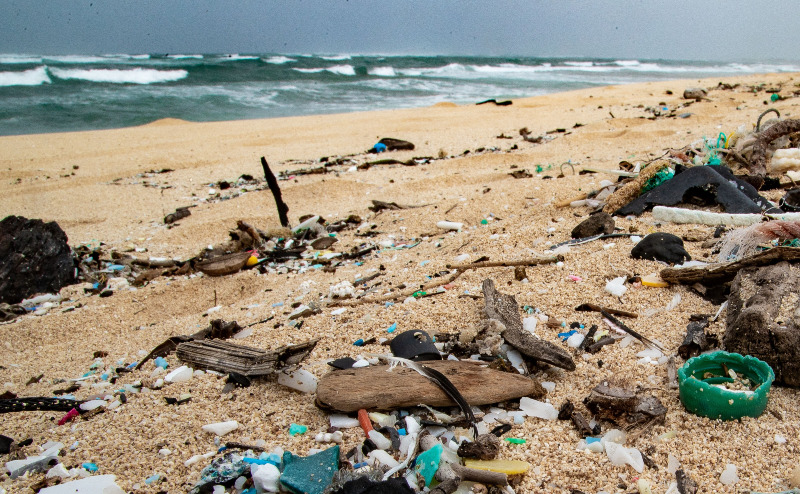
Measuring the Devastating Impact of Ocean Trash
by Jazmin Becerril Gonzalez, age 13
Did you know that over 5.25 trillion pieces of plastic exist in the ocean today? More surprisingly, there are four billion plastic microfibers per square kilometer beneath the surface, and nearly 269,000 tons of microfibers litter the surface. Ocean trash is a major environmental concern that scientists have only begun to understand.
For years, scientists have studied the amount of ocean trash and its escalating effects on marine life. While studies date back decades, it was not until recently that certain small regions in the Southern hemisphere were analyzed. These remote regions were challenging to sample in the past; however, recent technology has made it possible to study them. This is an important development for understanding how plastic pollutes the world’s oceans.
Kara Lavender Law, an oceanographer at the Sea Education Association in Woods Hole, Massachusetts, said, “The first piece is to understand where [ocean debris] is.” Scientists are working to understand the full extent of plastic pollution in the ocean. Studying how much plastic is in the ocean is the first step in figuring out how to solve the problem.
Researchers continue to study the density of ocean trash, how it breaks down, and how different ecosystems might respond to changes in plastic accumulation. Some major concerns relate to how plastic degradation can release toxins into marine environments. Though many scientists understand how large plastics affect marine life, the dangers of microplastics are still unclear.
Richard Thompson, a biologist at Plymouth University in England, stated, “The greater the concentration, the greater the risk of exposure. If we are missing a major sink where there are major concentrations of plastic, we might not be learning how harmful plastics are.”
Recent data about trash accumulation in the ocean only accounts for a portion of the plastics that exist and flow into the ocean every year. There is still more that is yet to be counted. From large pieces of plastic on the surface to small pieces down in ocean trenches, measuring the total ocean trash becomes challenging, but it is not impossible.
Scientists use various methods to estimate the quantity of ocean trash. These include doing beach surveys, using computer models, and estimating the flow of ocean trash. The newest measurements have used computer modeling based on samples taken from the ocean. While this data isn’t complete, it is still helpful to answer questions about marine health.
Marcus Eriksen, the co-founder of 5 Gyres Institute—a nonprofit ocean advocacy group—uses computer modeling based on samples to analyze ocean trash. The process is painstaking and time-consuming. In his research, he used samples collected from 24 survey trips and estimated that 5.25 trillion pieces of debris lay on the surface. During his travels, Eriksen gathered many types of trash. Some examples include candy wrappers, fish netting, and even stuffed animals.
Eriksen’s research has created a better understanding of how plastics flow in the ocean. Specifically, plastics usually collect in the world’s five ocean gyres, the five massive swirling currents across the globe. Over time, the plastic decomposes into smaller pieces and eventually sinks to deeper parts of the ocean or is carried to faraway regions on the planet. Eriksen said, “These fragments are anywhere on the planet at this point. We’re finding them everywhere.”
Eriksen is not the only one who has found these results. Andres Cozar Cabañas, a researcher at the University of Cadiz in Spain, has similar estimations. While they use different methods to gather their data, both approaches resulted in very similar findings. The comparable data gives scientists confidence that the estimated numbers are accurate.
While these numbers are discouraging, scientists believe that there are ways to solve the problem through sorting and tracking. Peter Ryan, a zoologist at the University of Cape Town in South Africa, wrote a book about tracking marine debris and its changes. Ryan started his work 30 years ago, and he found that we have succeeded in reducing floating plastic pellets in the ocean that are ingested by sea birds. Although researchers have found a reduction in larger plastics, microplastics have become a critical issue that requires more research.
As of now, scientists continue to study ocean trash, how it circulates across the planet, and how it can impact giant ecosystems. A lot of research is being done today to understand how much plastic is in the ocean. It is an important first step to eventually taking action to clean it up.
[Sources:
National Geographic
;
NOAA; Associated Press
]

